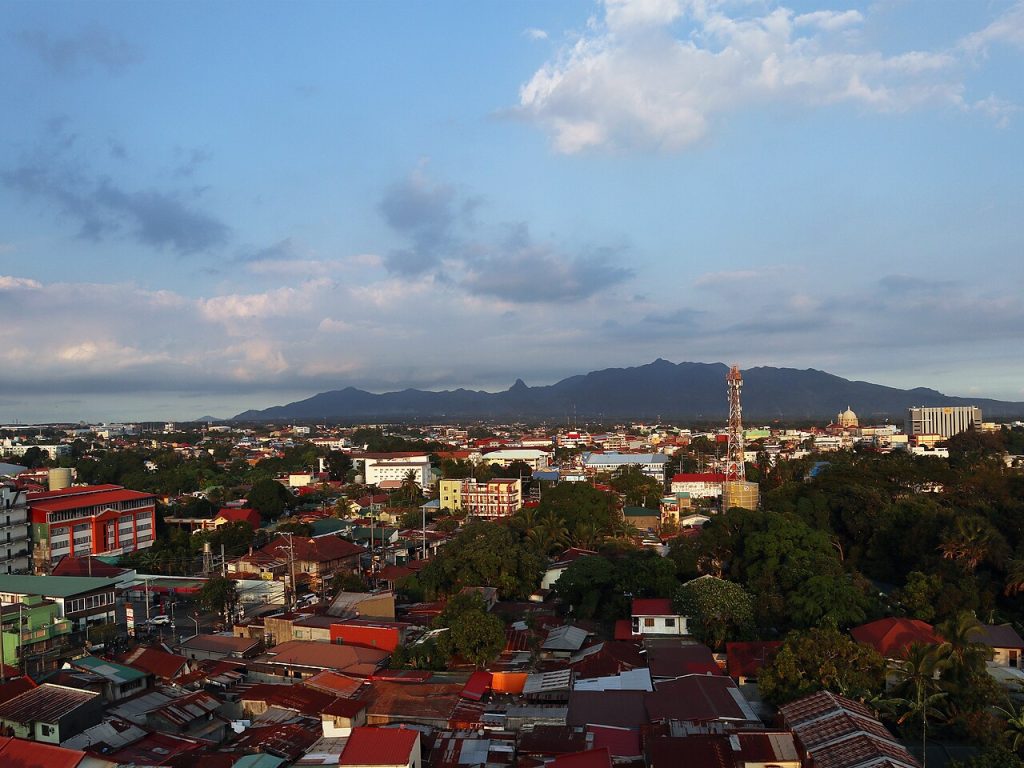
Skyline View from Mataas na Lupa by Patrickroque01
Let’s discover Lipa City: The Heart of Batangas
Nestled in the heart of Batangas, the component city of Lipa City is a vibrant and bustling city known for its rich culture, scenic landscapes, and strong heritage. With 72 barangays and a 2020 population of 372,931 it has a land area of 209.40 sq. kilometers or 80.85 sq. miles.
Whether you are looking for a quick getaway from Metro Manila or a deeper exploration of Batangas, Lipa offers a unique blend of historical attractions, delectable cuisine, and thrilling adventures. Let’s dive into what makes Lipa City a must-visit destination in the Philippines.
by Lipa City: Joana Dalangin
A Glimpse into Lipa’s Rich History
Lipa City, often referred to as the “Coffee Capital of the Philippines,” has a storied past that has shaped its present-day culture and economy. The city gained recognition during the Spanish colonial period for its thriving coffee industry. At its peak, Lipa was one of the world’s largest exporters of coffee, earning the nickname “Little Rome of the Philippines” due to the wealth brought in by the coffee trade.
You can still sense this heritage in the city’s architecture. Landmarks like the San Sebastian Cathedral, built in the 1800s, showcase beautiful colonial-era architecture. The cathedral, with its striking façade and intricate interiors, stands as a testament to the city’s deep Catholic roots and its significant place in the religious history of Batangas.
The Cool Climate and Scenic Landscapes
Lipa City boasts a cool and pleasant climate, thanks to its elevated location at around 1,025 feet above sea level. This makes it a favorite destination for people looking to escape the heat of the metro. Surrounded by mountains and lush greenery, the city offers numerous spots for nature lovers and adventurers alike.
Mt. Malarayat, for example, is a popular hiking destination that provides panoramic views of Batangas and nearby provinces. If you prefer a more relaxed outdoor experience, a visit to the Bluroze Farm and Wildlife Sanctuary will let you enjoy nature walks and interactions with wildlife.
by MPAT Thesis Output
The Coffee Culture of Lipa
No visit to Lipa City would be complete without experiencing its famed coffee culture. The city is the birthplace of “Kapeng Barako,” a variety of coffee that is robust and bold in flavor. It’s a local staple that has become a symbol of Lipa’s enduring coffee heritage.
When in Lipa, make sure to visit one of the many coffee shops and cafes that serve freshly brewed Kapeng Barako. The aroma alone is enough to awaken your senses. Try pairing your coffee with local delicacies like Panutsa (peanut brittle) or Bibingka (rice cake), which are popular in the region.
Religious and Spiritual Sites
Lipa City is also known for its spiritual sites, drawing pilgrims and devotees from across the country. One of the most visited sites is the Carmelite Monastery, home to the miraculous image of the Our Lady of Mediatrix of All Grace. Many believe in the miraculous powers of this image, making it a significant destination for those seeking spiritual healing and reflection.
The Divine Mercy Shrine, with its towering statue, offers a peaceful retreat where visitors can meditate and find solace. The shrine’s serene atmosphere, surrounded by lush greenery, makes it a great spot for reflection.
Culinary Delights of Lipa City
The culinary scene in Lipa City is a reflection of its diverse culture and traditions. One of the most popular dishes you must try is Lomi Batangas, a thick, hearty noodle soup that is perfect for the city’s cool weather. This comfort food is loaded with fresh ingredients like egg noodles, pork, liver, and a savory broth that locals swear by.
Another must-try is Bulalo, a beef shank soup known for its rich and flavorful broth. This dish is a favorite among tourists, especially during the colder months. Pair it with a side of Kapeng Barako for an authentic Lipa experience.
by Arventures
Shopping and Pasalubong
If you’re looking for souvenirs, Lipa City won’t disappoint. The city has several markets and pasalubong centers where you can buy local delicacies like Kapeng Barako beans, tablea (pure chocolate tablets), and tawilis (a small fish endemic to Taal Lake). The Lipa City Public Market is a great place to explore if you want a taste of local life and to find unique Batangueño products.
Festivals and Events
Lipa City is known for its lively festivals that celebrate its culture and history. One of the biggest events is the Lipa City Coffee Festival, held annually to honor the city’s coffee heritage. The festival features a variety of activities, including coffee-tasting events, barista competitions, and cultural performances.
Another notable celebration is the Feast of San Sebastian, the city’s patron saint. The festivities include street parades, processions, and a vibrant display of local traditions and dances. It’s a fantastic time to visit if you want to experience the city’s lively atmosphere and deep-rooted traditions.
How to Get There
Lipa City is conveniently located just about 85 kilometers south of Metro Manila, making it easily accessible by car or bus. The travel time is roughly 1.5 to 2 hours via the South Luzon Expressway (SLEX) and the STAR Tollway. Public transportation options, such as buses from major terminals in Manila, are also readily available.
by Kayle PH
Final Thoughts
Lipa City is a charming blend of tradition and modernity, where the echoes of its rich history meet the pulse of a vibrant, growing city. Whether you are visiting for its coffee, its festivals, or its natural beauty, Lipa has something for everyone. It’s a place where you can slow down, savor each moment, and experience the warmth and hospitality of Batangueños.
So, the next time you plan a trip, consider making Lipa City your destination. You might just discover a new favorite spot in Batangas.